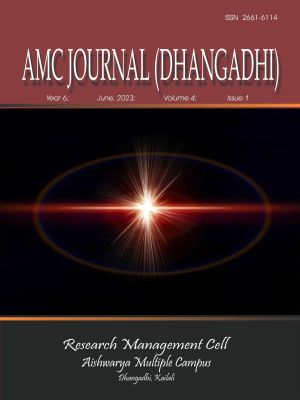Effectiveness of Collaborative Writing Strategy in Improving EFL Students’ Writing Skill
DOI:
https://doi.org/10.3126/amcjd.v4i1.58829Keywords:
conventional strategy, collaborative writing, strategy, writing skillAbstract
The ability to write efficiently and effectively in English is significant for academic success. The academic achievement of students who are proficient in writing skills tends to be better than that of students who are less proficient. So, the teachers have to choose effective teaching writing strategies which can assist in enhancing students’ writing skill. In this perspective, the present quantitative study conducted employing quasi-experimental methodologies attempts to explore the effectiveness of Collaborative Writing (CW) in improving the writing skill of grade or class ten English as Foreign Language (EFL) students. The sample population consisted of 60 students studying in grade 10 at one secondary-level institutional school located in Banke district. I employed convenience sampling to select the school and typical case sampling, a kind of purposive sampling to select the sample population. Selected students were divided into Control Group (CG) and Experimental Group (EG) based on the sections to which they studied or related. CG was taught using the conventional strategy whereas EG was taught by using the CW strategy. I employed test (pre and post-test) technique to collect the data and the collected data were analysed employing the descriptive analysis technique of quantitative data analysis. The result of the study indicated that CW is more effective for developing the writing skill of secondary-level EFL students. Therefore, teachers are suggested to employ CW technique to enhance the writing skill of the students in English.




